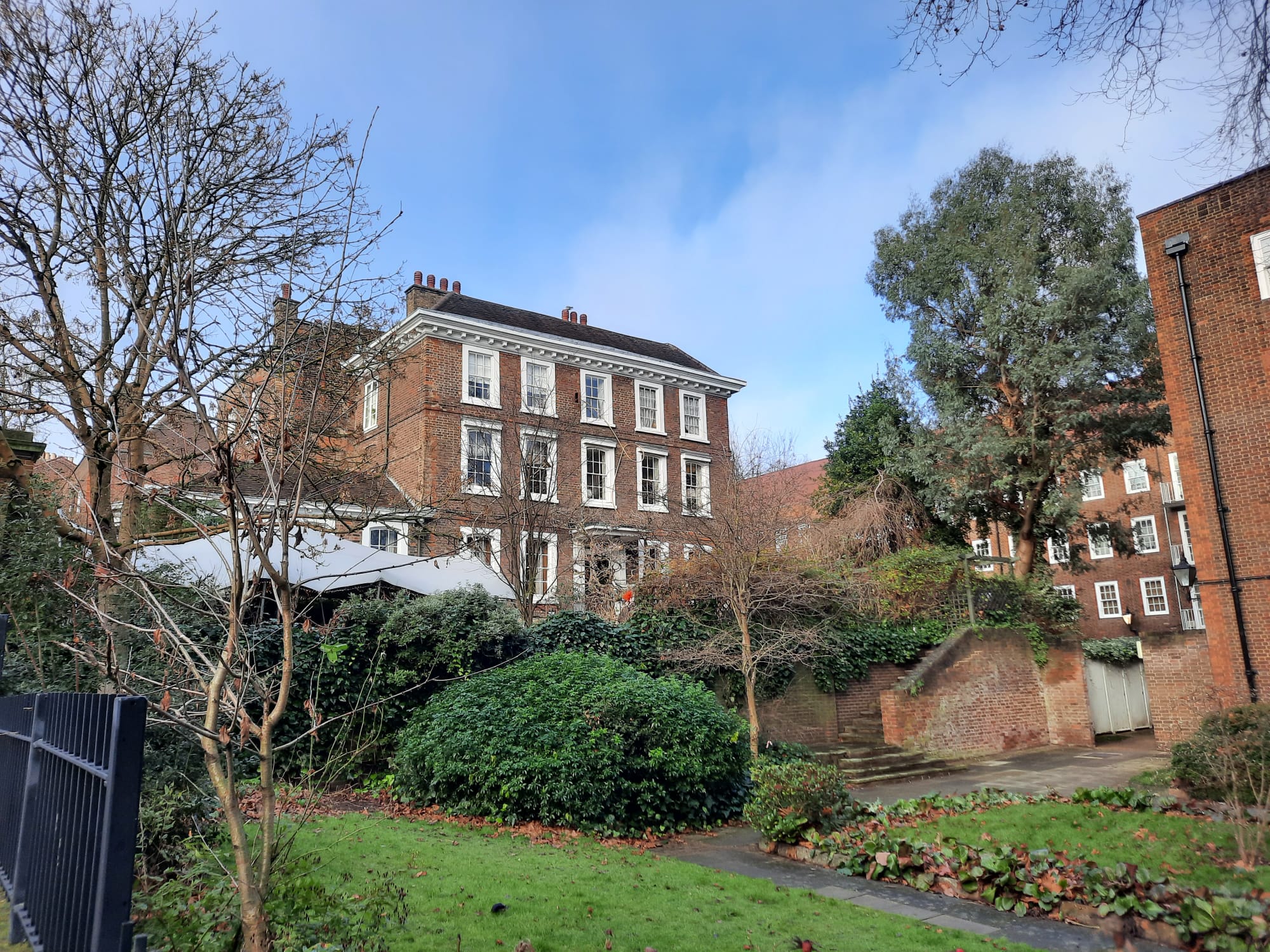Burgh House & Hampstead Museum, London
A description of a visit to Burgh House in Hampstead, which also includes the Hampstead Museum. A nice survival which has become something of a neighbourhood cultural hub.
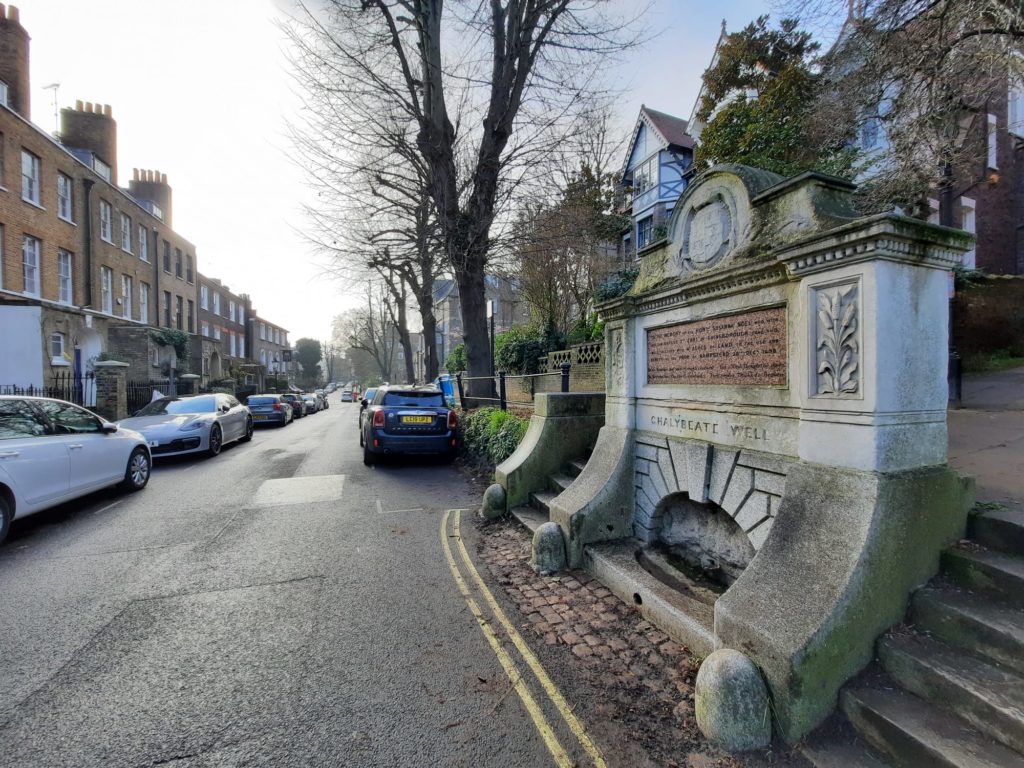
Burgh House And Hampstead Museum
Burgh House is a delighfully historic house in the delightfully upmarket London suburb of Hampstead. It dates to 1704, which means it is in the Queen Anne style. As a house, it has enjoyed a varied and exciting life. It was built at the same time as Hampstead Wells Spa was being constructed. We have largely forgotten now that for an 18th Century Londoner, Hampstead was a nice country retreat away from unhealthy London. There are many springs across Hampstead Heath, and at various times the area provided water for much of London. In 1698 a Chalybeate Well (meaning the water contains iron) and land was gifted to benefit the poor in Hampstead. This is the well you can see in the image above. As is often the case, the health-giving qualities of the water attracted to Hampstead the sorts of people who can pay for a spa cure.
But anyway, back to Burgh House. In 1720, Hampstead Wells Spa’s physician Dr. William Gibbons moved in. His initials are still on the wrought iron gate. Later it took on the name Lewis House – Israel Lewis received a £5 fine for creating a public nuisance with a garden dung stall. A militia took over from 1858-1884 and built barracks out front. Rudyard Kipling’s daughter lived there for a while. And so on and so forth.
From 1937-46 it was unoccupied. Then Camden Council bought and restored it and opened a community centre and Citizen’s Advice Bureau. Until they discovered dry rot in 1977 and planned to turn it over to commercial use. A local group got together to fight this. They won, and after a refurbishment and under care of a trust it reopened in 1979 as a house and museum. Today Burgh House hosts the Hampstead Museum, a cafe, gift shop, exhibition space, and refurbished rooms which can be rented for events such as weddings. The cafe in particular is very popular (and makes great food). It really feels like a community asset.
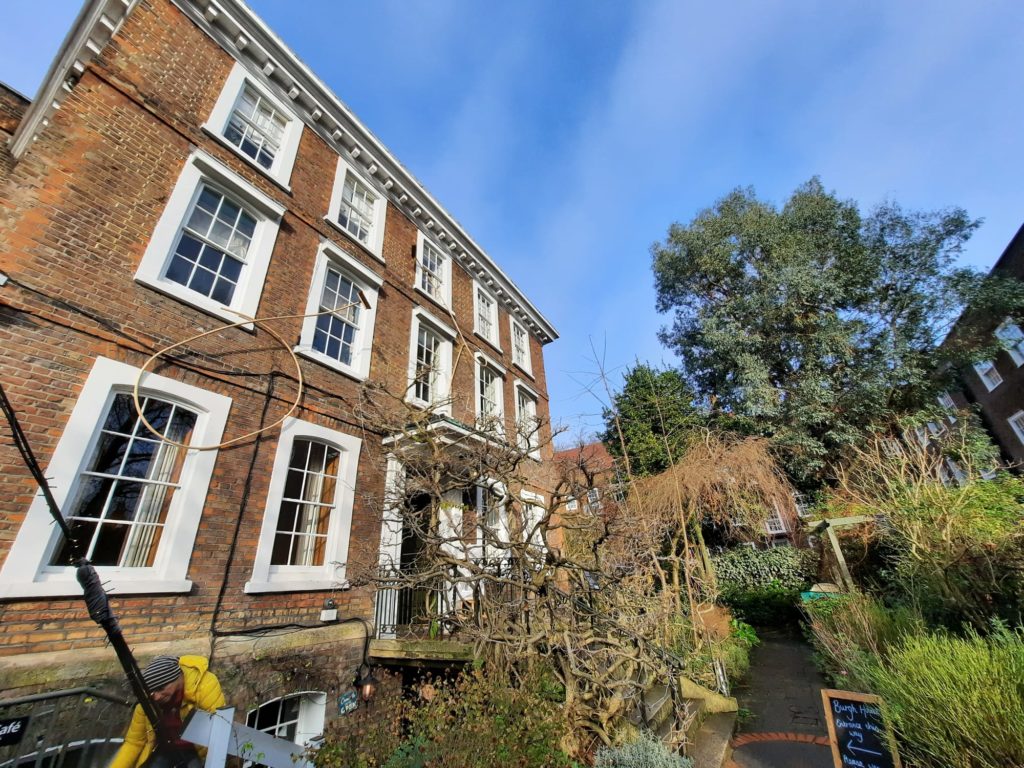
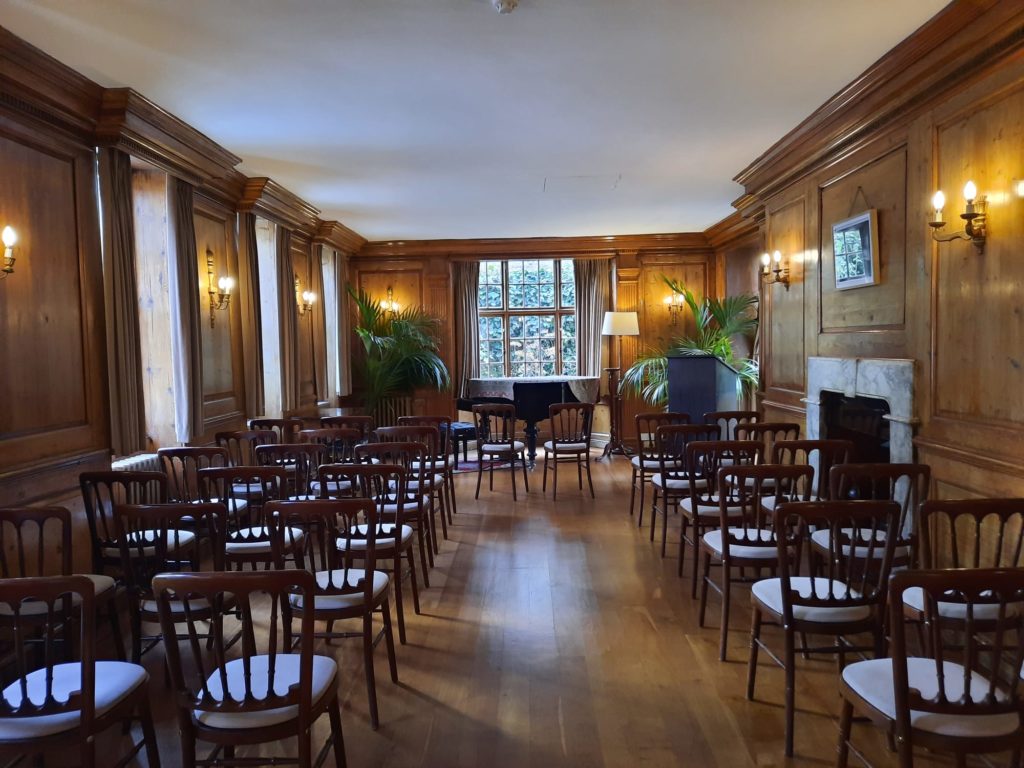
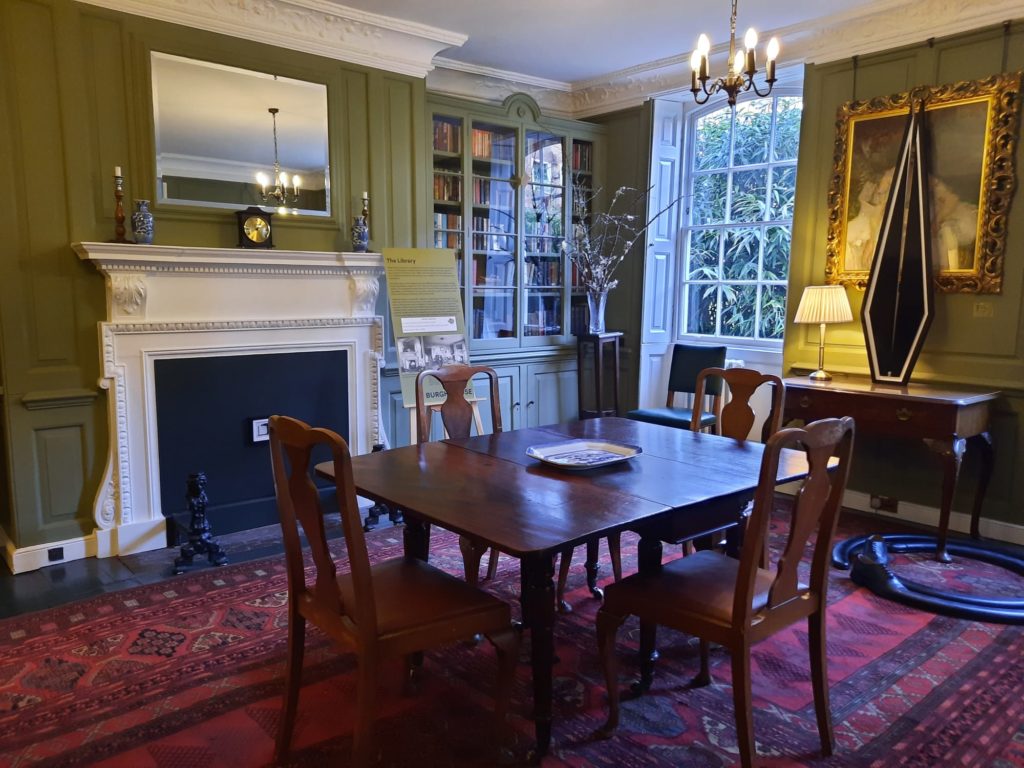
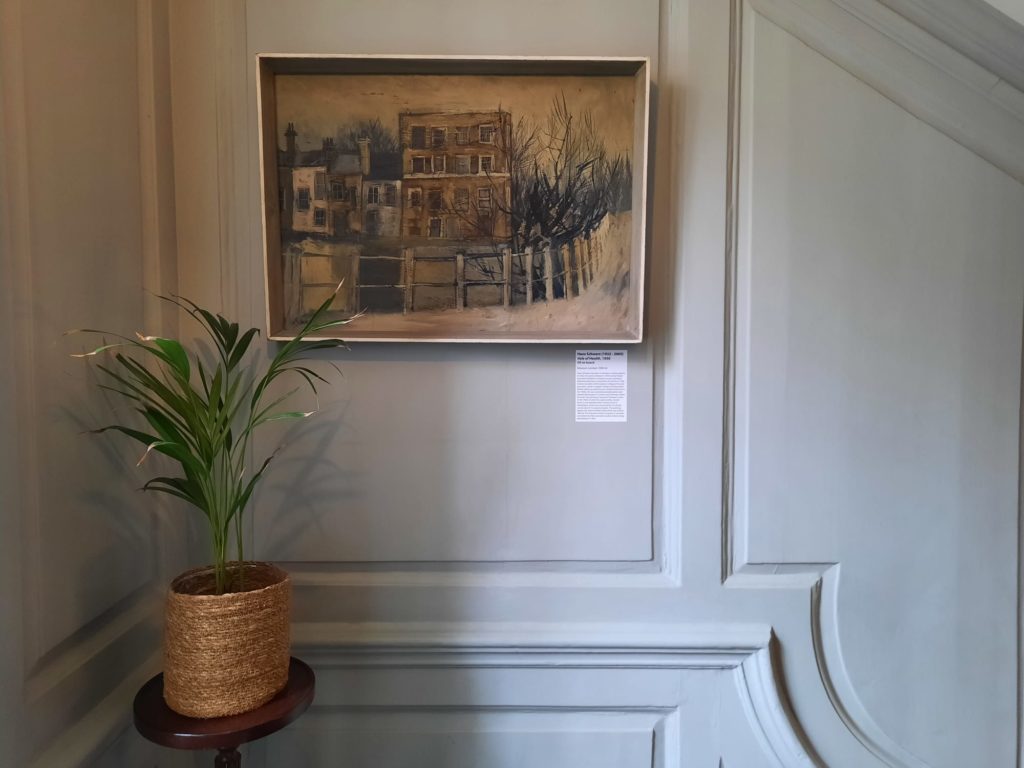
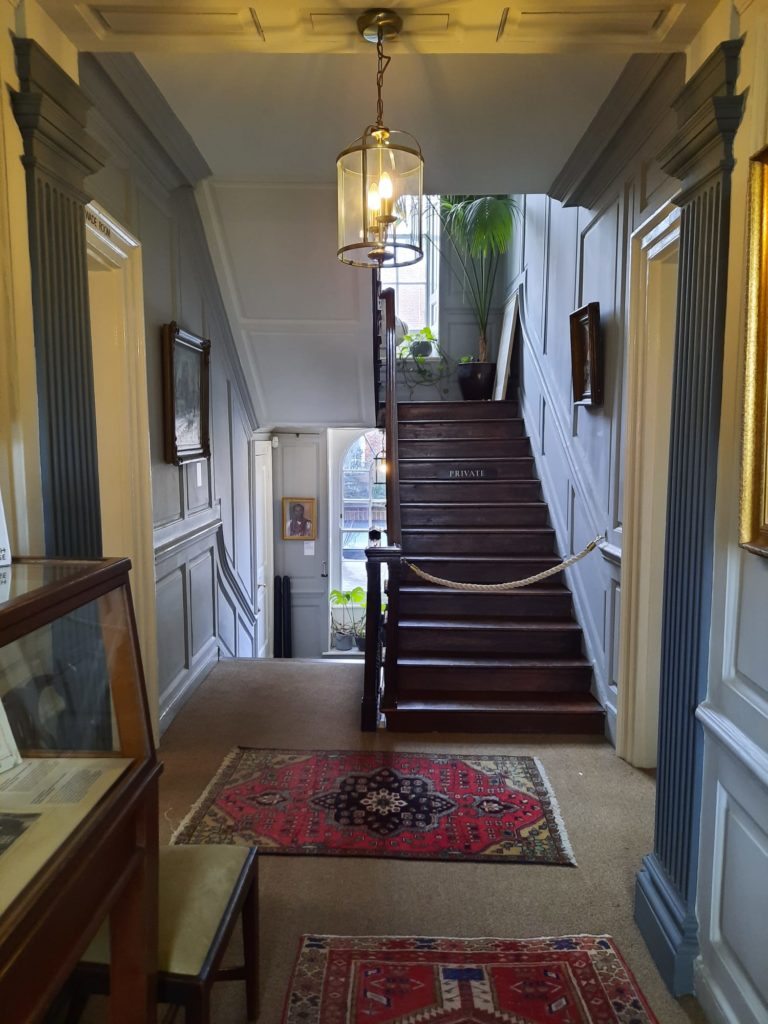
Burgh House As A Historic House
Because of all the many boxes that Burgh House ticks (museum, cafe, event space), it may not be surprising that it doesn’t feel like other historic houses. It didn’t stay in one family for long. It doesn’t have its own collection of art or furniture. The fact that it changed hands so often and has fulfilled various civic and military functions also has a bearing on the house today. It just isn’t very intact. By that I mean that one room is a music room but used to be a library (nice historic wooden panelling on the walls). Another is now a library but presumably used to be something else. When you walk up the stairs, the landing feels rather like a home. But then the first floor is a mix of museum, art exhibition and offices.
So it’s up to the visitor to look carefully at the details and clues that remain. The information panels in many rooms are quite good in assisting with this exercise of the imagination. As well as explaining the original function(s), they often include archival images of the house and its residents. Burgh House today seems quite far removed from actually being a family home so it’s nice to see these.
In terms of this first lens through which to view Burgh House then, I would say it’s not really about being a historic home any more. The value of Burgh House is much more in its role as a community hub and asset; in the story it tells about the power of people to come together to preserve a historic space with local importance. Do spend some time in the refurbished rooms but don’t expect a stately home experience.
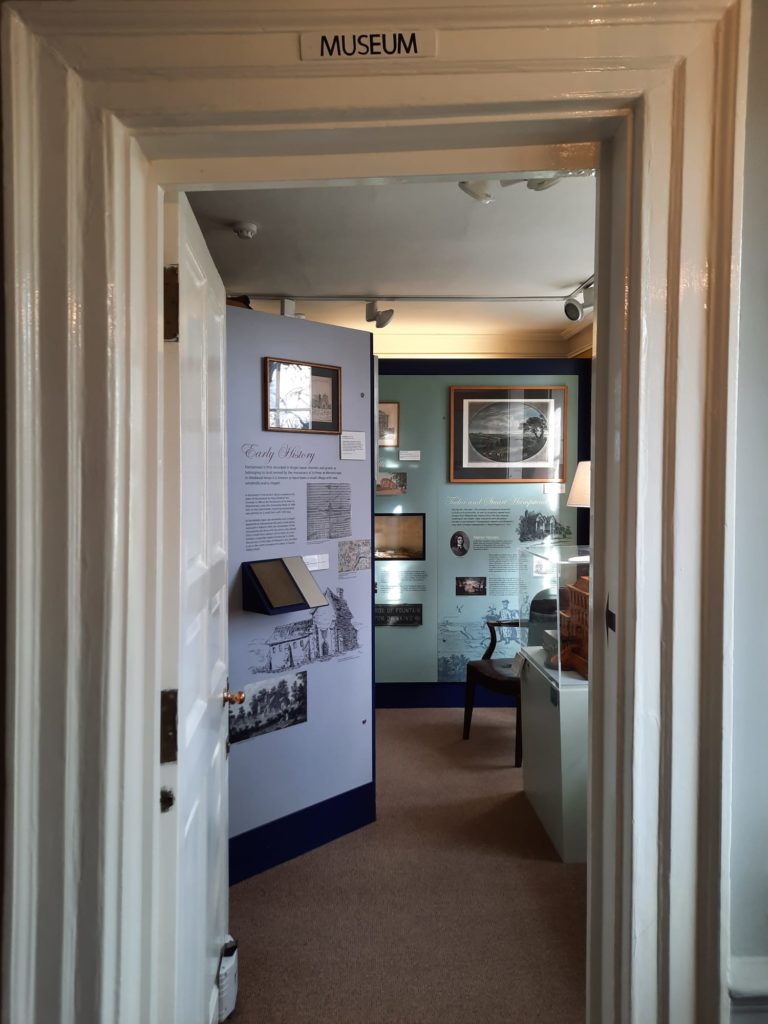
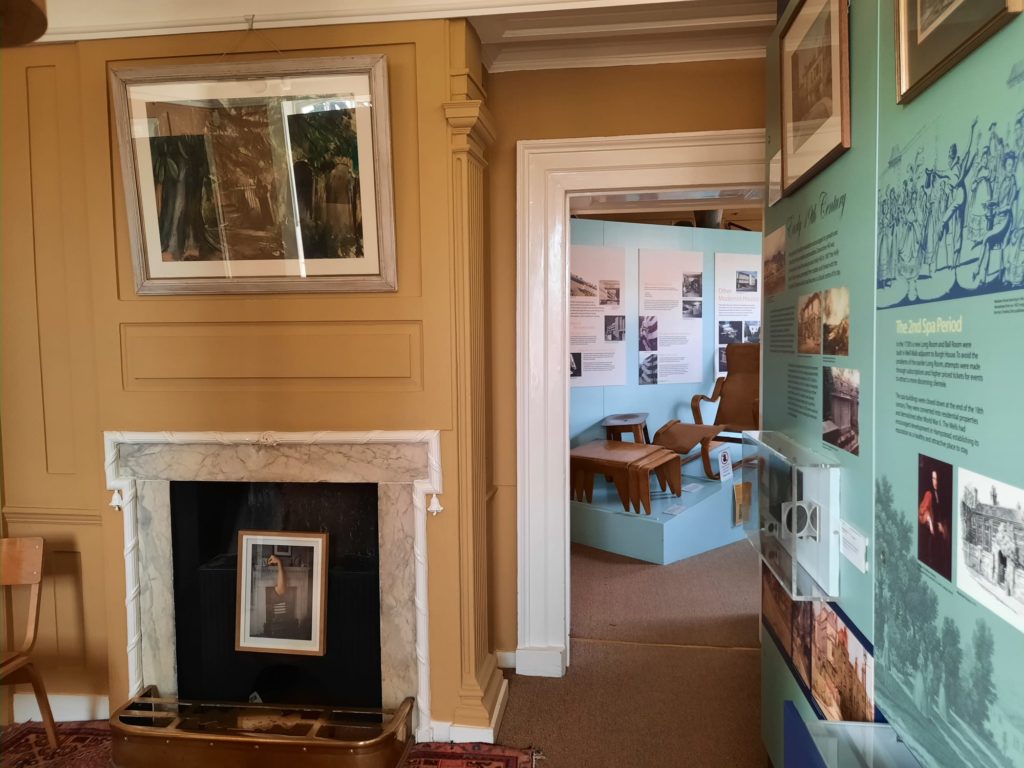
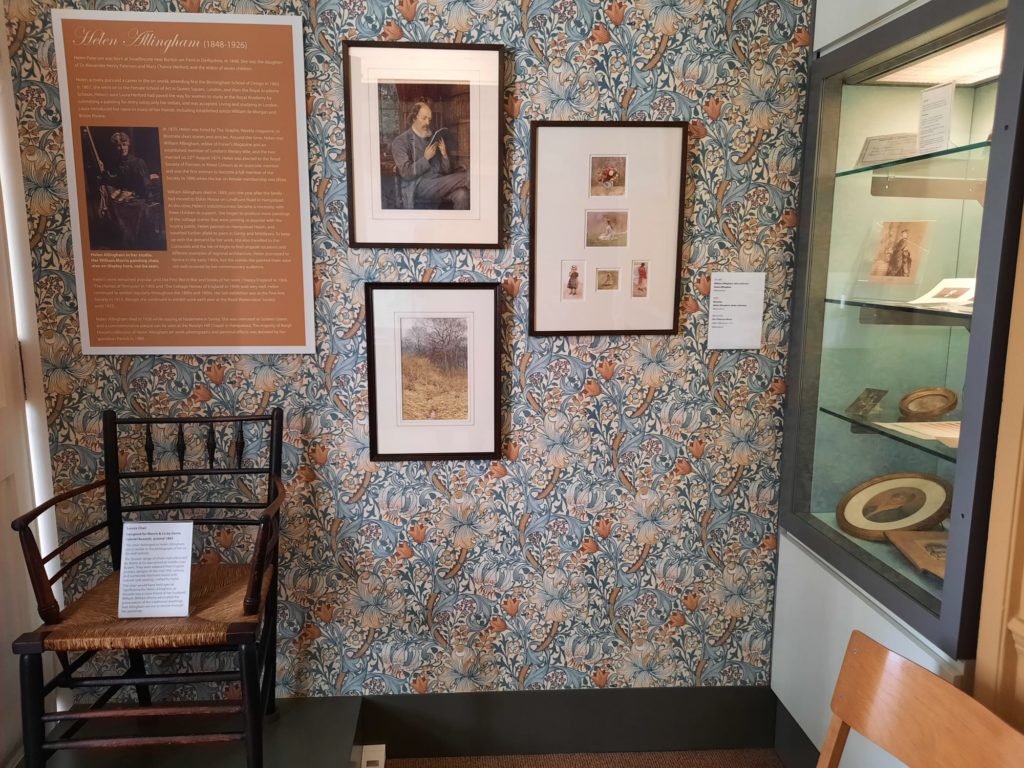
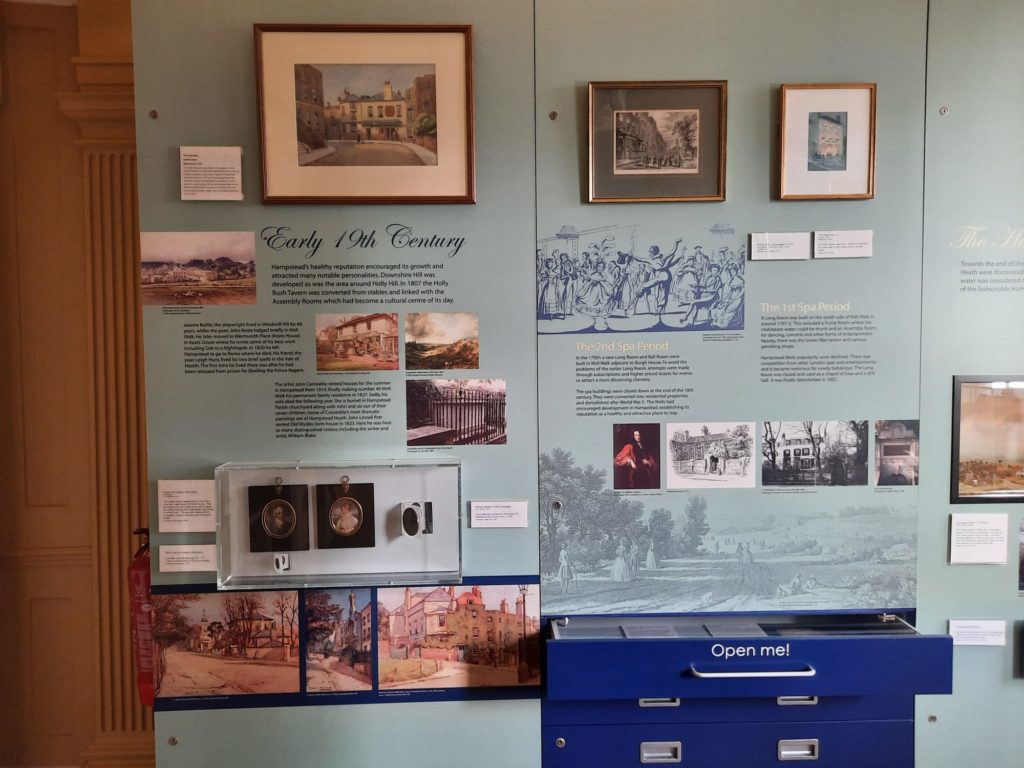
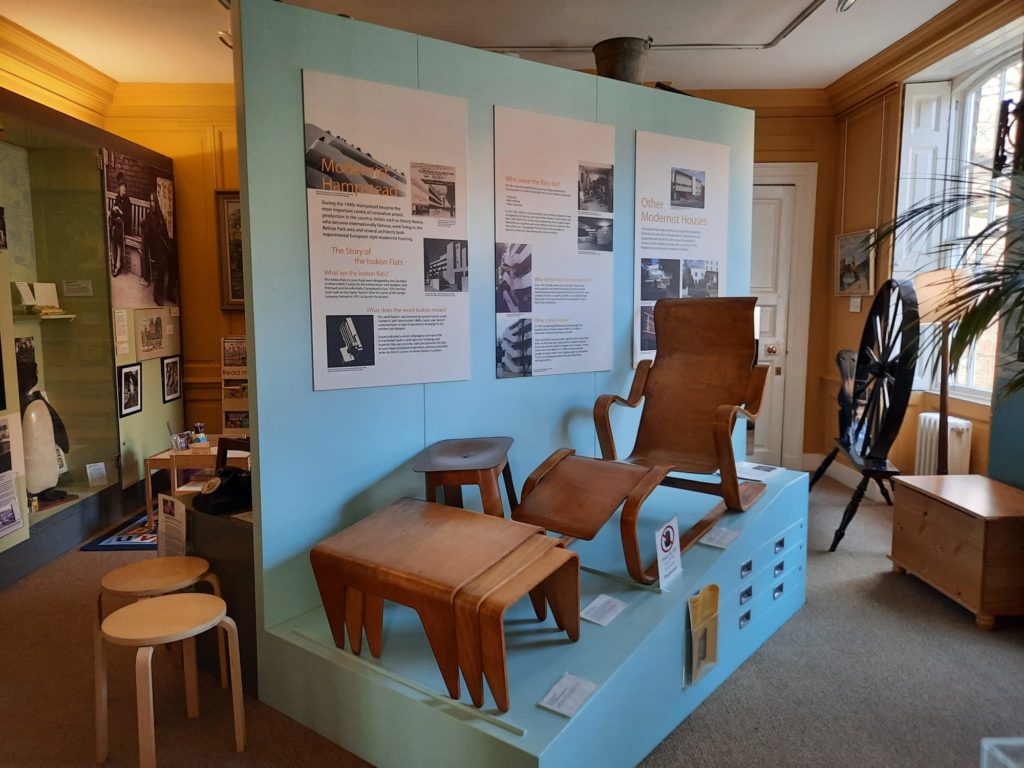
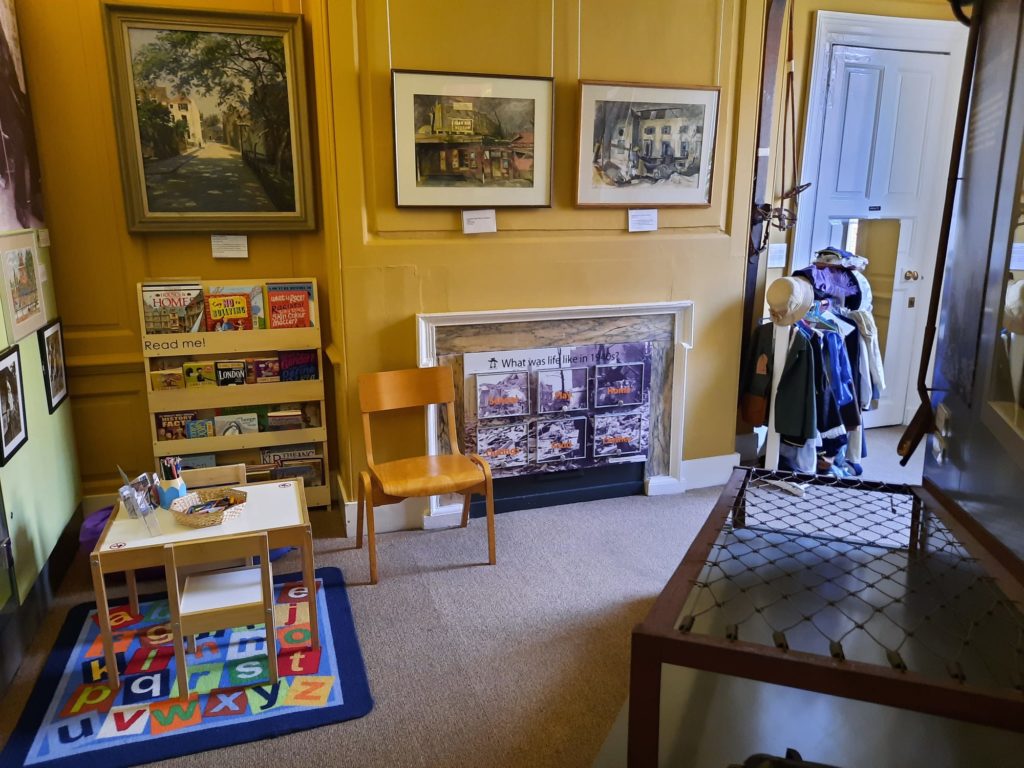
Hampstead Museum
I think Hampstead Museum is rather charming. It’s been at Burgh House since the 1979 reopening. The foundation collection was put together by Christopher and Diana Wade. The Wades, both passionate about local history, were instrumental in saving Burgh House from commercial redevelopment.
Visiting Hampstead Museum today, my strong suspicion is that the evolution of the collection since then has been large in the form of donations. It feels very organic – in the space of two rooms the displays span Mesolithic tools to modern design. The museum attempts to pack in an incredible amount of detail, telling the story of Hampstead in its early days, its development as a spa town, Victorian expansion, changes over the 20th Century, the impacts of WWII, and even more. There are recorded oral histories you can listen to. And even a children’s play area and dress up space. All in two rooms!
But, for me at least, therein lies the charm. That early passion from the Wades seems to have been handed down intact to today’s museum team. You can see how much love has gone into telling Hampstead’s history. Using a seemingly rather eclectic assortment of objects… When I first walked in I found the amount of information completely overwhelming, but when I took a deep breath and started over I was able to embrace the informational assault and start learning some local history.
My advice here is to pick and choose. If you have a particular period or angle you’re interested in, linger over that and skim other parts that are less relevant for you. I liked the modernist architecture and design section. And also seeing an original programme of The Death of a Black Man by Alfred Fagon, which, after its premiere in 1975, had not been staged again until I saw it at Hampstead Theatre last year.
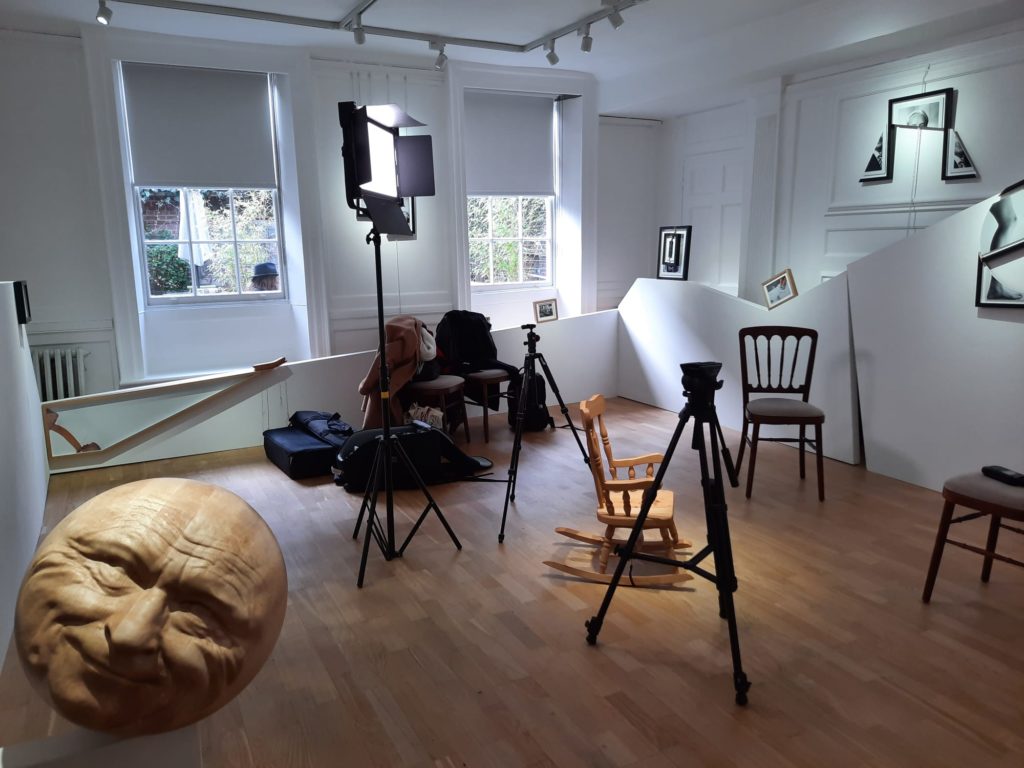
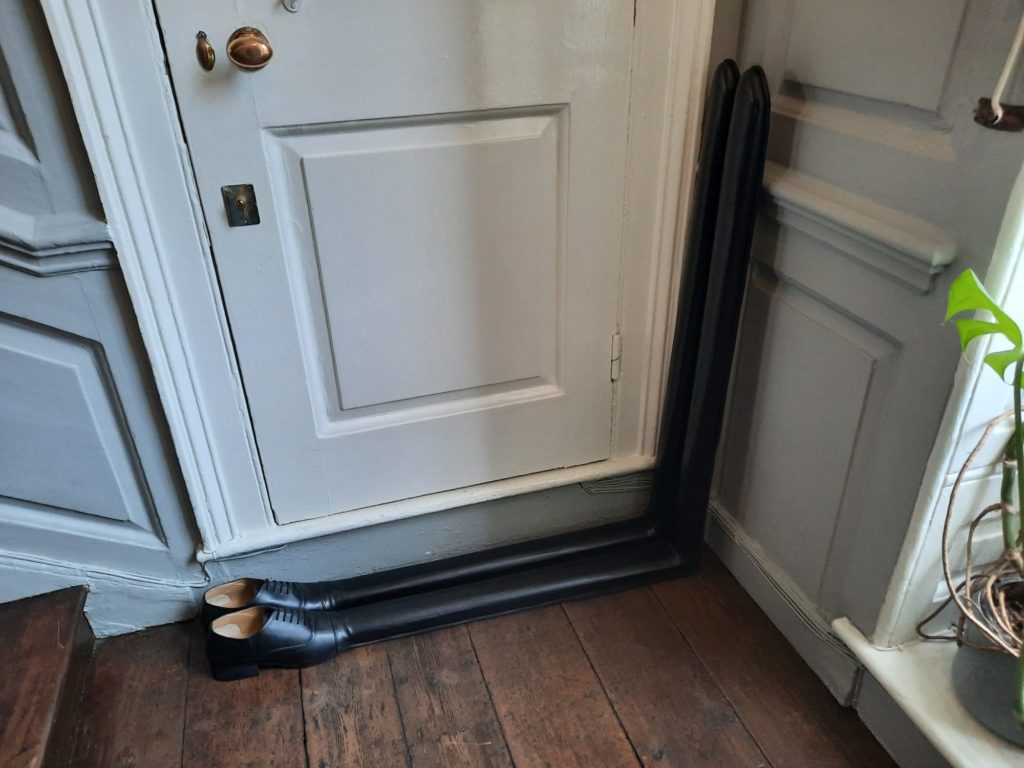
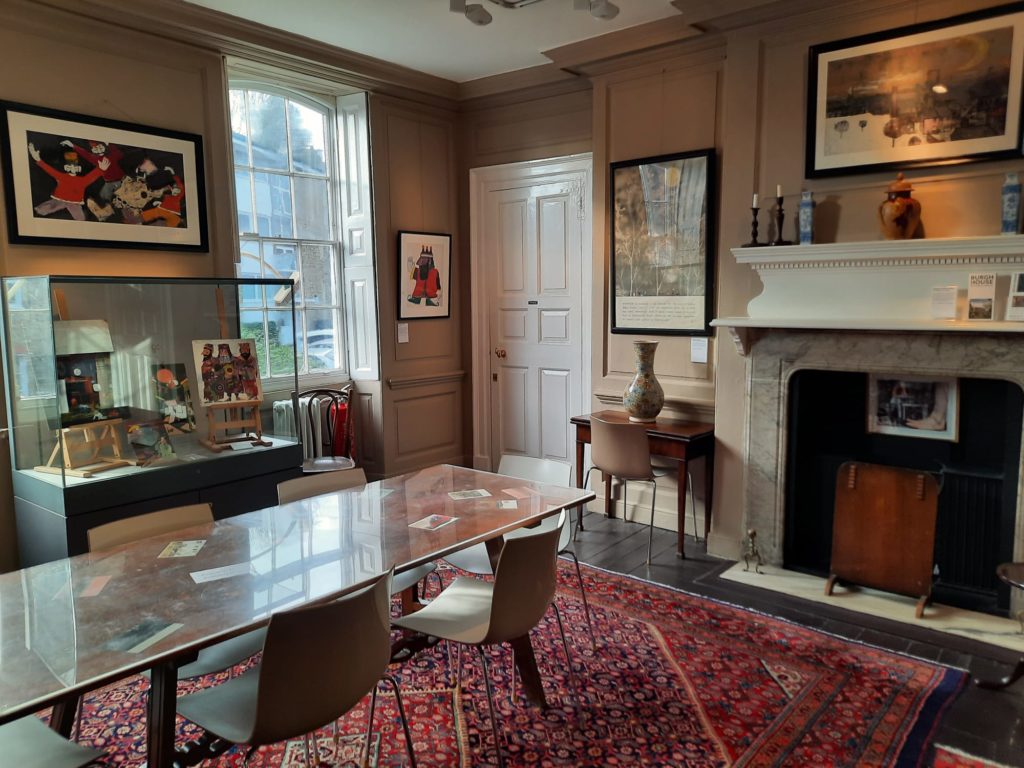
Burgh House As Art Space
Finally, Burgh House seems to host a number of art exhibitions throughout the year. There were a couple on display when I visited. Upstairs, just outside the Hampstead Museum space, was an exhibition of work by John Burningham. Burgh House describe it as a ‘seasonal selection’ of illustrations. Burningham was a resident of Hampstead who died in 2019. There were a number of very charming illustrations on view, including for a London tube poster.
The bigger exhibition when I visited was Knots: Jonny Briggs x Burgh House. This was an experimental, site-specific exhibition. So as well as a concentration of work in a downstairs room, you encounter artworks throughout the house. As you can see in the images above there was some filming taking place on the day I visited so I couldn’t get up close to everything. But I found Briggs’s work rather whimsical – familiar objects made unfamiliar, like the unwearable shoes you see above. This exhibition ended on 6 March, but more contemporary art will, I’m sure, be coming soon. Check out exhibitions and events here.
So all in all Burgh House was a nice discovery. I liked learning more about Hampstead’s history. And seeing a historic home converted into multi-purpose space through local efforts. If you too want to visit Burgh House, you should absolutely include a trip to the basement cafe, and see what takes your fancy before or after. Only a couple of blocks from Hampstead Heath so can be combined with a bracing walk as well.
Salterton Arts Review’s rating: 3/5
If you see this after your page is loaded completely, leafletJS files are missing.

